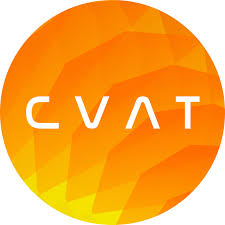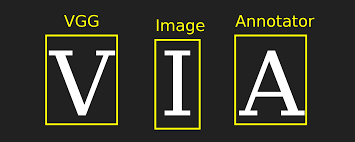Image annotation plays a crucial role in training machine learning models, especially for tasks related to computer vision. Whether you’re working on object detection, segmentation, or classification, having the right annotation platform can make a significant difference. In this article, we’ll take a look at some of the top image annotation platforms designed to streamline and improve the data labeling process. These platforms offer a variety of features, from simple tools to advanced AI-assisted labeling, ensuring your project gets off to a strong start.

1. FlyPix AI
At FlyPix AI, we specialize in geospatial analysis, leveraging AI to transform geospatial data into actionable insights. Our platform helps teams detect objects, monitor changes, and identify anomalies within satellite and aerial imagery. It’s ideal for industries requiring detailed analysis of Earth’s surface, such as agriculture, urban planning, environmental monitoring, and construction. With FlyPix AI, we aim to make image annotation platforms more efficient, allowing users to gain valuable insights from their visual data.
We provide a user-friendly, no-code platform that enables you to create and train custom AI models tailored to your specific needs. Our platform supports various data sources, including drone, satellite, hyperspectral, LiDAR, and SAR imagery, offering versatile and comprehensive analysis. Whether you’re an individual user or part of a large organization, we have subscription plans to fit different data processing needs.
Key Features:
- No-code AI platform for object detection, segmentation, and anomaly detection
- Supports satellite, drone, hyperspectral, LiDAR, and SAR image types
- Interactive image annotation tools for model training without coding
- Real-time analytics, including dashboards, heatmap generation, and change tracking
- Enterprise-grade support with API access, multispectral processing, and white-label options
Best For:
- Teams needing to annotate large sets of geospatial imagery
- Industries like agriculture, urban planning, and environmental monitoring
- Users looking for a user-friendly, no-code image annotation platform
- Organizations needing AI-powered, scalable solutions
Services:
- Geospatial object detection and localization
- Change and anomaly detection in imagery
- Dynamic tracking of objects over time
- Custom AI model development for tailored analytics
- Seamless integration with existing GIS systems
- Heatmap generation for visualizing data patterns
Contact and Social Media Information:
- Website: flypix.ai
- Address: Robert-Bosch-Str. 7, 64293 Darmstadt, Germany
- Phone: +49 6151 2776497
- Email: info@flypix.ai
- LinkedIn: www.linkedin.com/company/flypix-ai

2. Label Studio
Label Studio is an open-source data labeling tool that supports a range of annotation tasks, including images, audio, and text. It offers a customizable platform that handles various data types and annotation formats. Teams can use it for machine learning tasks such as object detection, text classification, and audio transcription. Label Studio allows users to tailor the tool to their needs, making it flexible for different types of AI projects.
The platform includes collaboration features, enabling multiple team members to work on annotations at the same time. It also supports integration with machine learning frameworks, making it easy to export labeled data for training. Being open-source, Label Studio can be modified and extended to fit specific project requirements, accommodating both small and large-scale annotation tasks.
Key Features:
- Supports image, text, audio, and video annotations
- Highly customizable for various annotation tasks
- Real-time collaboration features for team-based work
- Open-source, free to use with the option to extend functionality
- Integration with machine learning pipelines for easy export of labeled data
Best For:
- Teams working with multiple types of data (images, text, audio, video)
- Projects requiring real-time collaboration among team members
- Users looking for a customizable, open-source tool for annotation
- Machine learning teams needing integration with model training pipelines
Contact and Social Media Information:
- Website: labelstud.io
- LinkedIn: www.linkedin.com/company/heartex
- Twitter: x.com/labelstudiohq

3. DataTurks
DataTurks is an annotation platform that focuses on simplifying the process of labeling data for machine learning applications. It supports a variety of annotation tasks, including image labeling, text classification, and named entity recognition. The tool allows teams to annotate datasets quickly and efficiently, with support for both supervised and unsupervised learning tasks.
The platform offers collaborative features, enabling multiple team members to annotate data together, improving efficiency. DataTurks also provides an API for integrating with other workflows and automation tools, ensuring that labeled data can be seamlessly transferred to machine learning models for training. With a focus on ease of use, DataTurks is suitable for small teams and large enterprises alike.
Key Features:
- Supports image, text, and entity recognition annotation tasks
- Collaborative annotation features for team-based work
- API integration for connecting with machine learning workflows
- Flexible and intuitive user interface for quick labeling
- Suitable for both small and large-scale annotation projects
Best For:
- Teams working on image and text-based annotation tasks
- Projects requiring an easy-to-use annotation tool
- Users needing a collaborative platform for multiple team members
- Teams looking for an API to integrate with machine learning pipelines
Contact and Social Media Information:
- Website: docs.dataturks.com

4. SuperAnnotate
SuperAnnotate is an image annotation platform designed for teams working on computer vision projects. It supports various annotation types, such as bounding boxes, polygons, and semantic segmentation, and is built to manage large datasets, making it suitable for both small-scale and enterprise-level projects.
The platform offers AI-powered features to assist with annotations, which helps users speed up the labeling process. It also includes real-time collaboration tools, allowing teams to work together on the same project efficiently. Furthermore, SuperAnnotate integrates with machine learning frameworks, facilitating easy data export for model training.
Key Features:
- Supports bounding boxes, polygons, and segmentation annotation tasks
- AI-assisted tools to speed up the annotation process
- Real-time collaboration for teams working on large datasets
- Integration with machine learning pipelines for easy model training
- Scalable for both small and large projects
Best For:
- Teams working on computer vision projects
- Projects requiring fast and scalable image annotation
- Teams looking for AI-powered tools to assist with data labeling
- Users needing seamless integration with machine learning workflows
Contact and Social Media Information:
- Website: www.superannotate.com
- LinkedIn: www.linkedin.com/company/superannotate
- Twitter: x.com/superannotate
- Facebook: www.facebook.com/superannotate

5. Dataloop
Dataloop is an AI-powered annotation platform that enables users to annotate images, videos, and other types of media for machine learning purposes. It supports a wide range of annotation tasks, such as object detection, segmentation, and classification. Dataloop also provides a suite of tools for data management, making it easier for teams to organize, track, and label large datasets.
The platform offers automation and collaboration features that streamline the annotation process. Dataloop integrates well with machine learning frameworks, allowing users to quickly move from annotation to model training. It’s suitable for teams that need to annotate complex datasets at scale, with customizable workflows and real-time updates.
Key Features:
- Supports object detection, segmentation, and classification
- AI-powered annotation tools to speed up the process
- Real-time collaboration features for team-based projects
- Customizable workflows for various annotation tasks
- Integration with machine learning frameworks for model training
Best For:
- Large teams working on high-volume annotation tasks
- Projects requiring real-time collaboration
- Teams needing AI-assisted annotation tools for efficiency
- Users needing customizable workflows for specific annotation tasks
Contact and Social Media Information:
- Website: dataloop.ai
- Address: 2 Sapir st, Herzliya, POB 12580, 4685206, Israel
- E‑mail: info@dataloop.ai
- LinkedIn: www.linkedin.com/company/dataloop

6. CVAT
CVAT (Computer Vision Annotation Tool) is an open-source platform developed for annotating images and videos for computer vision projects. It supports a variety of annotation types, including object detection, segmentation, and keypoint labeling. CVAT is designed to be flexible, making it suitable for both small and large-scale annotation tasks. It’s often used by teams working on computer vision projects in industries such as robotics, autonomous vehicles, and security.
The platform offers collaborative features, allowing multiple users to work on a single project. It’s also integrated with machine learning frameworks, making it easy to export labeled data into training models. CVAT’s open-source nature means that it’s free to use and can be customized to fit the needs of specific projects.
Key Features:
- Open-source and free to use
- Supports object detection, segmentation, and keypoint labeling
- Collaborative annotation features for team-based work
- Integration with machine learning frameworks for easy export
- Customizable for specific annotation needs
Best For:
- Teams working on computer vision and machine learning tasks
- Users who need a free, open-source tool for annotation
- Projects that require collaboration between multiple users
- Teams integrating data directly into machine learning workflows
Contact and Social Media Information:
- Website: www.cvat.ai
- LinkedIn: www.linkedin.com/company/cvat-ai
- Facebook: www.facebook.com/cvat.corp

7. Roboflow
Roboflow is an image annotation platform built for teams working on machine learning tasks like object detection, image classification, and segmentation. It enables users to annotate images with bounding boxes, polygons, and other labels to create accurate datasets. Roboflow also includes AI-assisted tools that help speed up the annotation process by automating certain tasks, reducing the time and effort needed for manual labeling.
Beyond annotation, Roboflow offers dataset management tools that allow users to organize and version their datasets throughout the project. The platform integrates with popular machine learning frameworks such as TensorFlow and PyTorch, making it easy to export labeled data for model training. For users with larger datasets or needing additional features, Roboflow also offers paid subscription plans.
Key Features:
- Supports object detection, classification, and segmentation
- AI-assisted annotation to speed up the process
- Dataset management tools for organizing and versioning data
- Integrates with machine learning frameworks like TensorFlow and PyTorch
- Offers real-time collaboration features for teams
Best For:
- Machine learning teams working on computer vision tasks
- Users needing AI-assisted tools to speed up annotation
- Projects requiring integration with TensorFlow or PyTorch
- Teams needing to manage large datasets for model training
Contact and Social Media Information:
- Website: roboflow.com
- LinkedIn: www.linkedin.com/company/roboflow-ai
- Twitter: x.com/roboflow

8. KeyLabs
KeyLabs offers a platform for data annotation with a focus on machine learning model training. It supports various annotation types, including image classification, object detection, and segmentation. The platform is designed to be user-friendly, making it accessible for both beginners and advanced users. KeyLabs also includes features for real-time collaboration, allowing teams to work together efficiently on annotation projects.
In addition to its image annotation tools, KeyLabs integrates well with machine learning workflows, making it easy to export annotated data for training. The platform is suitable for teams working on a wide range of computer vision tasks, from small datasets to large-scale image labeling projects.
Key Features:
- Supports image classification, object detection, and segmentation
- User-friendly interface suitable for both beginners and advanced users
- Real-time collaboration features for team-based annotation
- Integrates with machine learning frameworks for easy export
- Scalable for both small and large projects
Best For:
- Teams working on image classification, object detection, and segmentation
- Users looking for an easy-to-use annotation platform
- Projects requiring real-time collaboration among multiple team members
- Teams needing integration with machine learning workflows
Contact and Social Media Information:
- Website: keylabs.ai
- LinkedIn: www.linkedin.com/company/keylabsai
- Twitter: x.com/KeylabsA
- Facebook: www.facebook.com/Keylabs.ltd

9. Scale AI
Scale AI is a data labeling platform that delivers high-quality annotated data for machine learning projects. Specializing in image annotation tasks such as object detection and segmentation, it provides a comprehensive solution for labeling large datasets. The platform combines machine learning models with human annotators to ensure the accuracy and reliability of the labeled data.
Scale AI also offers real-time project management features, making it easier for teams to track their progress. It integrates smoothly with machine learning workflows, enabling users to quickly export labeled data for model training. This platform is particularly useful for teams working on large-scale projects that demand fast and accurate annotation of visual data.
Key Features:
- Supports object detection, segmentation, and classification
- Combines machine learning models with human annotation for high accuracy
- Real-time project management features for efficient workflow
- Integrates easily with machine learning pipelines
- Suitable for large-scale image annotation projects
Best For:
- Large teams working on image annotation projects
- Users needing both AI and human-powered annotation for accuracy
- Projects requiring real-time management and tracking
- Teams needing seamless integration with machine learning models
Contact and Social Media Information:
- Website: scale.com
- LinkedIn: www.linkedin.com/company/scaleai
- Twitter: x.com/scale_ai
- Facebook: www.facebook.com/scaleapi

10. Supervisely
Supervisely is an image annotation platform designed for computer vision tasks like object detection, segmentation, and keypoint labeling. The platform offers a variety of annotation tools, such as bounding boxes, polygons, and masks, to label images efficiently. Supervisely is built to handle large datasets, making it suitable for both small and large-scale projects.
In addition to its annotation tools, Supervisely provides collaboration features, enabling teams to annotate data together in real-time. The platform integrates with machine learning frameworks, allowing users to export annotated data directly into their training workflows. Supervisely is a flexible and scalable solution for teams working on a variety of image annotation tasks.
Key Features:
- Supports object detection, segmentation, and keypoint labeling
- Real-time collaboration for team-based annotation
- Integration with machine learning frameworks for easy export
- Customizable for specific annotation tasks
- Scalable for both small and large projects
Best For:
- Teams working on computer vision tasks like object detection and segmentation
- Projects that require real-time collaboration and teamwork
- Teams needing integration with machine learning models
- Users who need a flexible platform for different annotation tasks
Contact and Social Media Information:
- Website: supervisely.com
- E‑mail: hello@supervisely.com
- LinkedIn: www.linkedin.com/company/deep-systems
- Twitter: x.com/supervisely_ai

11. VGG Image Annotator
VGG Image Annotator is an open-source, browser-based platform designed for annotating images and videos. It supports various annotation tasks, including object detection and segmentation, using bounding boxes, polygons, and points. The platform is lightweight, meaning it doesn’t require installation and can be run directly from a web browser. This makes it ideal for small to medium-scale projects and is especially useful for quick and simple annotations without the need for complex setups.
Despite being basic, VGG Image Annotator offers an intuitive and user-friendly interface for annotating images and videos. Since it’s open-source, users have the flexibility to modify and extend the platform according to their needs. This makes it a solid choice for those looking for a free, straightforward annotation solution.
Key Features:
- Open-source and browser-based tool
- Supports bounding boxes, polygons, and points for annotation
- Lightweight and easy to use with no installation required
- Simple interface for quick, manual annotations
- Customizable for specific annotation tasks
Best For:
- Users looking for a free, open-source image annotation tool
- Small to medium-scale annotation projects
- Teams needing a lightweight tool without complex setup
- Researchers or developers in need of simple annotation tasks
Contact and Social Media Information:
- Website: www.robots.ox.ac.uk/~vgg/software/via
- E‑mail: vgg-webmasters@robots.ox.ac.takethisout.uk
- Twitter: x.com/Oxford_VGG

12. V7
V7 is an image annotation platform that supports a variety of tasks, including object detection, segmentation, and classification. It features an AI-assisted labeling system that helps users annotate images more efficiently. The platform is scalable, catering to both small projects and large datasets, and it supports different annotation types such as polygons, bounding boxes, and keypoints, making it versatile for various machine learning tasks.
The platform also offers real-time collaboration, enabling teams to work together on annotations, which is especially useful for group-based projects. V7 integrates with machine learning pipelines, helping streamline the transition from data labeling to model training. This makes it suitable for teams working in fields like computer vision, autonomous vehicles, and robotics.
Key Features:
- AI-assisted annotation for faster labeling
- Supports various annotation types like polygons, bounding boxes, and keypoints
- Real-time collaboration for team-based annotation
- Scalable to handle both small and large datasets
- Integration with machine learning pipelines for seamless workflows
Best For:
- Teams working on object detection, segmentation, and classification
- Users requiring AI-assisted tools to improve annotation speed
- Projects that need real-time collaboration among team members
- Large-scale image annotation tasks that need seamless integration with machine learning workflows
Contact and Social Media Information:
- Website: www.v7labs.com
- Address: 201 Spear Street, Suite 1100, San Francisco, CA 94105
- LinkedIn: www.linkedin.com/company/v7labs
- Twitter: x.com/v7labs

13. Labellerr
Labellerr is an image annotation platform designed to offer a fast and scalable solution for labeling large datasets. It supports various annotation types, such as object detection and segmentation, and aims to streamline the labeling process. The platform integrates machine learning tools to help accelerate data labeling, reducing the time needed to prepare data for training AI models.
Labellerr features a user-friendly interface that allows teams to annotate data quickly and efficiently. It is especially useful for large-scale projects requiring high-quality labeled data. By automating parts of the annotation process and improving workflows, Labellerr provides a flexible solution for various machine learning and AI tasks.
Key Features:
- Supports object detection, segmentation, and classification tasks
- AI-assisted annotation to speed up the labeling process
- User-friendly interface for easy collaboration
- Scalable for large datasets
- Integrates with machine learning pipelines for efficient data export
Best For:
- Teams working on large-scale data annotation projects
- Users needing AI-assisted tools for efficient labeling
- Projects that require high-quality labeled data for machine learning
- Teams needing integration with machine learning workflows
Contact and Social Media Information:
- Website: www.labellerr.com
- Address: 44, Tehama St, San Francisco, CA, USA 94107
- Phone:+16283133187
- E‑mail: support@tensormatics.com
- LinkedIn: www.linkedin.com/company/labellerr
- Twitter: x.com/Labellerr1
- Facebook: www.facebook.com/tensormaticslabellerr

14. Appen
Appen offers data annotation services across various industries, including computer vision, natural language processing, and speech recognition. The platform supports tasks like object detection, segmentation, and classification for image annotation. It combines AI tools with human annotators to label data, aiming for accuracy and consistency.
The platform is suited for large-scale annotation projects, as it can manage substantial volumes of data. It includes collaborative features and integrates with machine learning workflows, which can help streamline the annotation process for teams working on AI and machine learning projects.
Key Features:
- Supports object detection, segmentation, and classification tasks
- Combines AI tools and human annotators for high-quality labeling
- Handles large-scale datasets efficiently
- Provides integration with machine learning workflows
- Offers customizable annotation options for different project needs
Best For:
- Enterprises with large-scale annotation needs
- Teams requiring a mix of AI and human-powered annotation for high accuracy
- Businesses working on AI and machine learning projects at scale
- Projects requiring a customizable and flexible annotation solution
Contact and Social Media Information:
- Website: www.appen.com
- Address: 12131 113th Ave, N.E., Suite 100, Kirkland, WA 98034
- Phone: +1 206-800-2101
- LinkedIn: www.linkedin.com/company/appen

15. Innovatiana
Innovatiana offers a suite of tools for image annotation, designed to assist with object detection, segmentation, and other machine learning tasks. Their platform helps users annotate images quickly and efficiently, using a combination of AI tools and manual labeling. Innovatiana focuses on providing scalable solutions for teams that need to annotate large datasets, making it a suitable choice for businesses working with computer vision tasks.
The platform allows for real-time collaboration and provides integration options with machine learning frameworks, ensuring that annotated data can be used directly in model training. Innovatiana’s tools are particularly useful for industries that require fast, accurate, and scalable annotation solutions.
Key Features:
- Supports object detection, segmentation, and classification
- Combines AI-powered and manual annotation for accuracy
- Real-time collaboration for team-based annotation
- Scalable to handle large datasets
- Integrates with machine learning frameworks for seamless data export
Best For:
- Teams working on object detection and segmentation tasks
- Projects requiring high-quality labeled data for machine learning models
- Businesses that need a scalable and efficient annotation solution
- Users looking for real-time collaboration among multiple team members
Contact and Social Media Information:
- Website: www.innovatiana.com
- E‑mail: info@innovatiana.com
- LinkedIn: www.linkedin.com/company/innovatiana
- Twitter: x.com/innovatiana
Conclusion
Selecting the right image annotation platform is essential for effective machine learning and AI projects. Each tool mentioned here offers distinct features that cater to various needs, from object detection to segmentation. Whether you are working on a small dataset or managing large-scale projects, there is a platform that can help streamline your annotation process, improve data quality, and facilitate seamless integration with machine learning workflows.
